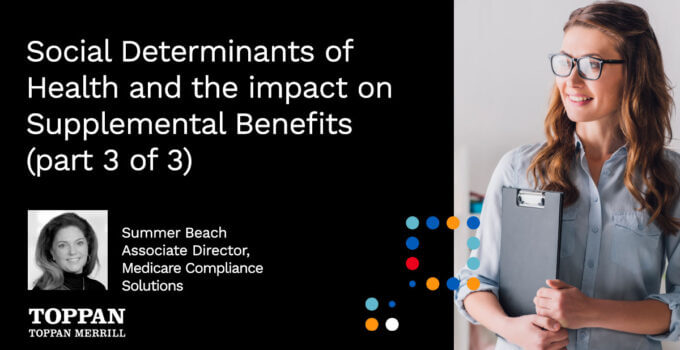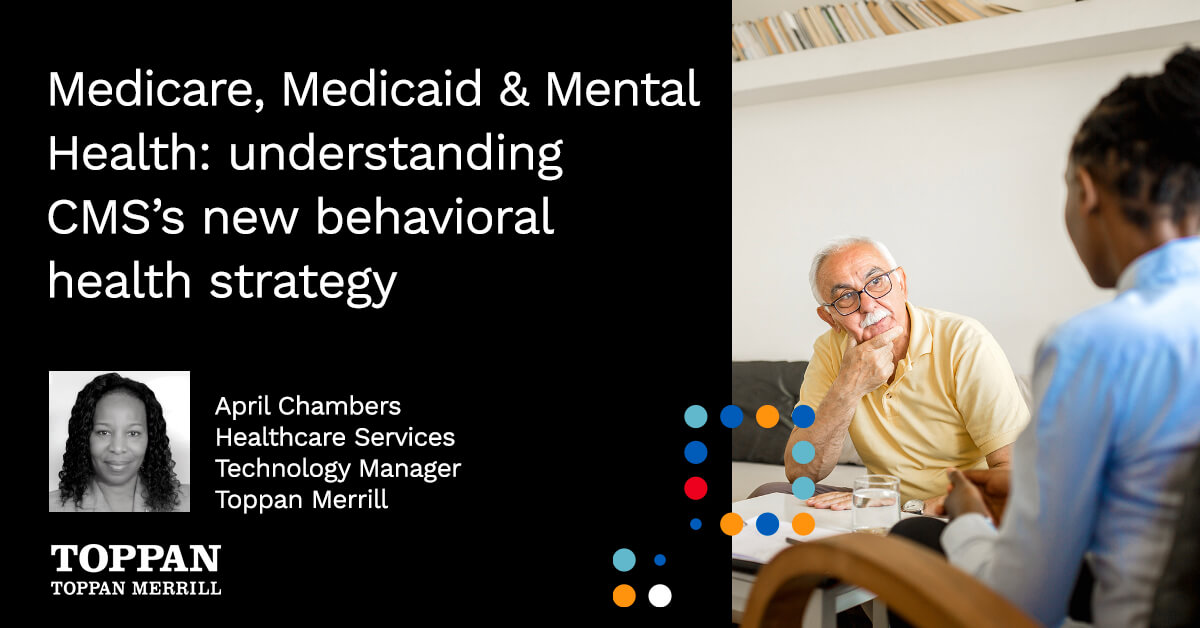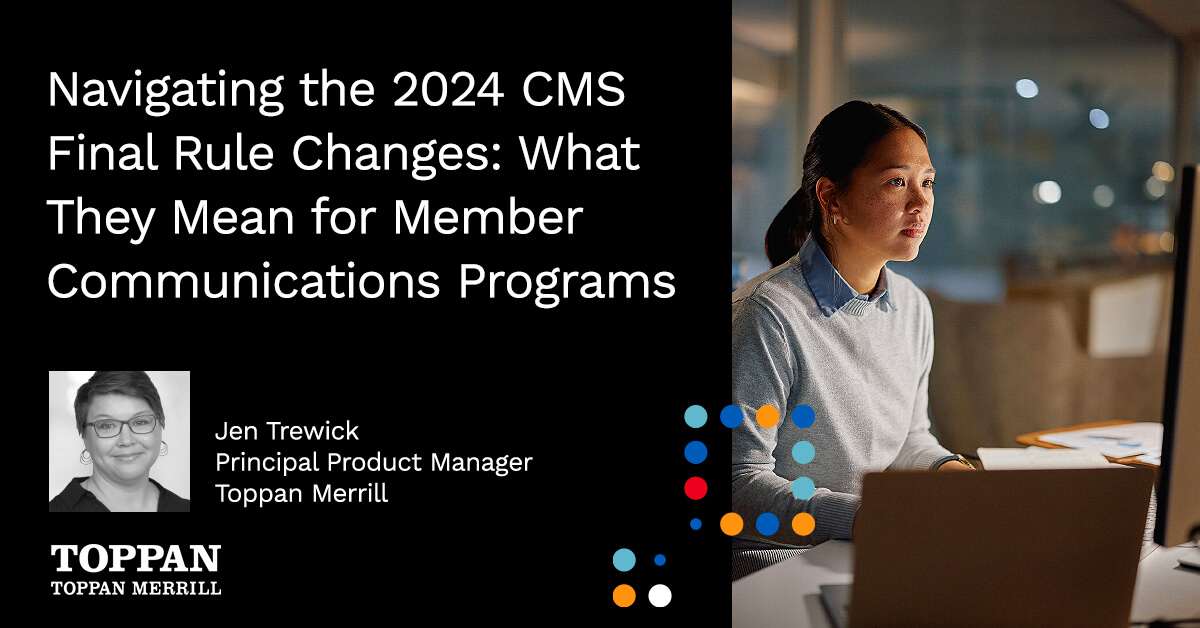In the first article, we started by building a foundation of the terms and concepts being explored in the series. The second article looked at the way this works in practice. In this article, the last in the series, we examine the future of supplemental benefits as they impact SDOH.
Supplemental Benefits and SDOH

Seema Verna
Former Administrator of the Centers for Medicare and Medicaid Services
March 14, 2017 – January 20, 2021
“The evidence is clear: social determinants of health, such as access to stable housing or gainful employment, may not be strictly medical, but they nevertheless have a profound impact on people’s wellbeing,” said former CMS Administrator Seema Verma. “Unfortunately, our fee-for-service system inherently limits the doctor-patient relationship to what can be accomplished inside the four walls of a clinician’s office. Today’s letter to state health officials highlights strategies by which states can promote a value-based system that fosters treatment of the whole person and lowers healthcare costs. Patients are more than a bundle of medical diagnoses, and it’s time our healthcare system treated them as such.”
At the same time, improving SDOH has well-documented advantages. In April 2022, the Assistant Secretary for Planning and Evaluation (ASPE) of the U.S. Department of Health and Human Services (HHS) reported, “Studies estimate that clinical care impacts only 20 percent of county-level variation in health outcomes, while social determinants of health (SDOH) affect as much as 50 percent. Within SDOH, socioeconomic factors such as poverty, employment, and education have the largest impact on health outcomes.”
Emerging SDOH policy changes
New supplemental benefits have emerged as a way to address SDOH in recent years, but the way health plans pay for those services is still evolving. Traditionally, supplemental benefits were financed with rebates. Plans paid out somewhere between 50% and 70% of the dollar amount. Dental, hearing, vision, and fitness benefits were extremely popular and effective — but support is still limited beyond those basic supplemental benefits.
In the following table, we look at the supplemental benefits offered by Medicare Advantage (MA) plans and the number of participants enrolled. The number of plans offering supplemental benefits and the percent of beneficiaries enrolled increased from 2018 to 2019, and 2019 to 2020 across all types of supplemental benefits, including acupuncture, community-based services, home modifications, nutrition, and telehealth.
| Supplemental benefit type | Percent of plans offering (Number of plans offering) | Percent of beneficiaries enrolled (Number of beneficiaries enrolled) | ||||
| 2018 | 2019 | 2020 | 2018 | 2019 | 2020 | |
| Acupuncture | 11% (251) | 16%(430) | 20%(611) | 16%(2,080,596) | 21%(3,033,724) | 23%(3,580,201) |
| Adult day care | 0%(0) | 0%(0) | 1%(42) | 0%(0) | 0%(0) | 3%(388,469) |
| Community-based services | 0%(0) | 0%(0) | 2%(74) | 0%(0) | 0%(0) | 3%(445,522) |
| Home-based palliative care | 0.09%(2) | 0.37%(10) | 2%(52) | 0%(63,066) | 1%(87,269) | 9%(1,328,190) |
| Home modifications | 6%(132) | 7%(189) | 10%(304) | 4%(489,610) | 6%(851,254) | 2%(366,341) |
| In-home support services | 8%(170) | 15%(404) | 16%(490) | 6%(739,704) | 16%(2,230,836) | 19%(2,875,219) |
| Meals | 20%(460) | 39%(1,047) | 46%(1,443) | 22%(2,796,594) | 40%(5,657,753) | 45%(6,916,861) |
| Medically approved nonopioid pain management | 1%(19) | 1%(37) | 1%(22) | 5%(683,193) | 6%(799,336) | 5%(797,584) |
| Nutrition/Wellness | 16%(353) | 16%(432) | 17%(541) | 17%(2,248,621) | 18%(2,617,277) | 20%(3,134,904) |
| Support for caregivers of enrollees | 0%(0) | 14%(374) | 2%(52) | 0%(0) | 24%(3,396,801) | 2%(351,828) |
| Telehealth | 7%(153) | 6%(173) | 59%(1,854) | 5%(675,348) | 6%(812,024) | 73%(11,176,784) |
| Transportation | 19%(423) | 28%(768) | 35%(1,091) | 21%(2,775,728) | 32%(4,562,542) | 34%(5,243,867) |
Source: Thomas Kornfield et al., Medicare Advantage Plans Offering Expanded Supplemental Benefits: A Look at Availability and Enrollment (Commonwealth Fund, Feb. 2021). https://www.commonwealthfund.org/publications/issue-briefs/2021/feb/medicare-advantage-plans-supplemental-benefits
In addition to the relatively slow uptake seen in many of these categories, benefits for high-cost, high-need participants, like the chronically ill, are even more limited.
The following table outlines the SSCBI benefits offered by MA plans in 2020. Understandably, the enrollment in these programs may be tempered by the fact that 2020 was the first year the programs were offered. Also, while plans can list what supplemental benefits they offer, their marketing materials must explain that not all beneficiaries will be eligible for those offerings.
| SSCBI benefit category | Total MA plans | ||
| Number of plans | Total plan enrollment | Percent of total MA enrollment | |
| Complementary therapies | 1 | 37,150 | 0% |
| Food and produce | 99 | 706,492 | 4% |
| Indoor air quality equipment and services | 44 | 246,267 | 1% |
| Meals** | 70 | 275,041 | 1% |
| Pest control | 112 | 642,530 | 3% |
| Service dog support | 51 | 455,864 | 2% |
| Services supporting self-direction | 19 | 112,747 | 1% |
| Social needs benefit | 33 | 149,033 | 1% |
| Structural home modifications | 38 | 87,333 | 0% |
| Transitional/temporary supports | 60 | 287,969 | 2% |
| Transportation for non-medical needs | 81 | 372,088 | 2% |
Source: Thomas Kornfield et al., Medicare Advantage Plans Offering Expanded Supplemental Benefits: A Look at Availability and Enrollment (Commonwealth Fund, Feb. 2021). https://www.commonwealthfund.org/publications/issue-briefs/2021/feb/medicare-advantage-plans-supplemental-benefits
Challenges facing Supplemental Benefits and SDOH
There are several barriers to SDOH innovations. The Better Medicare Alliance found three primary challenges to meeting the needs of Medicare Advantage participants:
- Disconnect with social services — There are social needs that are not met through healthcare services or newer supplemental benefits geared toward SDOH. These will need to be met and services coordinated across systems.
- Misalignment of incentives — There is also a misalignment in incentives. Medicare payment rules can be complicated, and funding for many interventions exists through grants or other public funding.
- Limited technology — When MA providers and social services organizations have disparate systems, it can lead to a lack of timely data.
The evolution of Supplemental Benefits
The value of supplemental benefits is even becoming more popular outside of MA plans. Supplemental insurance is an option for many people who want to cover lost wages or otherwise receive a cash benefit under certain circumstances. Many of these make sense for the average consumer.
Changing regulations will introduce new opportunities for businesses that provide the services to support new supplemental benefits, like ridesharing or meal delivery, but there will have to be efforts to connect providers and consumers.
There are also varying perspectives on whether a plan should directly offer benefits that impact SDOH or support Community Based Organizations (CBOs) that provide those services. For example: One of the study’s participants recognized the strength of organizations in their plan’s community, described developing a program that aggregates community resources and is used by care managers to identify services and make referrals for members. Others discussed investing directly in CBOs (eg, through community grants) to enable these organizations to provide needed services to members and help “community partners be sustainable.” Per a JAMA Network report, “Participants highlighted being cognizant of not duplicating the efforts of CBOs that have existing expertise in addressing SDOH.”
The future of Supplemental Benefits
Within SDOH, the administration and specific offerings of supplemental benefits programs are still in flux. Toppan Merrill is aligned with the industry to adapt to CMS’ requirements and changes in benefits, including supplemental benefits driven by SDoH.
As the industry evolves, trust Toppan Merrill for your health plan communication needs. We deliver the technology and expertise to optimize the communications of Medicare Advantage plans for both print and digital distribution. We can help you eliminate process redundancies, streamline the creation of required Centers for Medicare & Medicaid Services (CMS) documents, and improve consistency in your health plan marketing. Get in touch today to get started.
Learn more at www.toppanmerrill.com.



